Understanding the Link Between Posture and Core Strength
Proper postural alignment and robust core strength are fundamental to maintaining musculoskeletal health and preventing pain. Physical therapy plays a critical role in assessing postural imbalances and employing targeted strategies to restore alignment and enhance core stability. This article explores how physical therapy interventions improve posture, strengthen core muscles, and alleviate pain through evidence-based practices.
How Physical Therapy Corrects Postural Imbalances
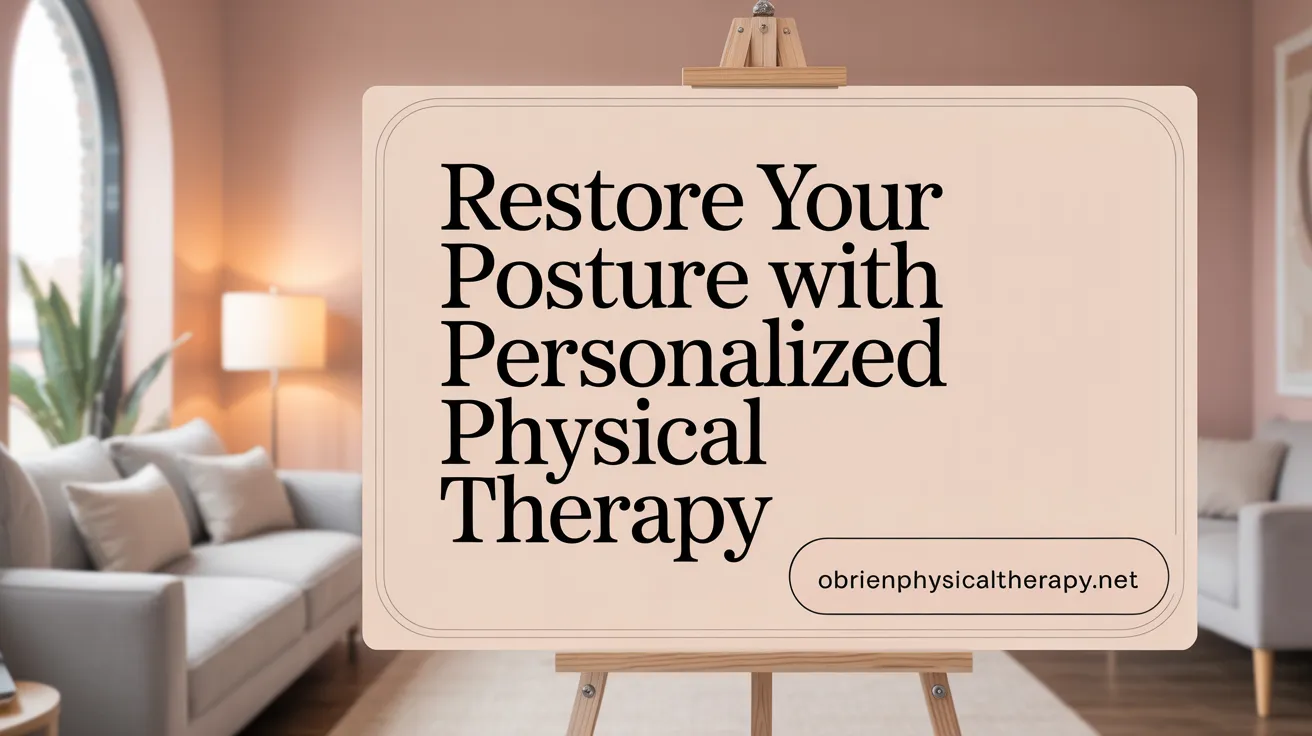
How can physical therapy improve postural alignment and address postural imbalances?
Physical therapy plays a vital role in correcting postural issues by carefully assessing the body’s alignment and movement habits. Through personalized treatment plans, therapists incorporate targeted exercises, stretching routines, manual therapy techniques, and ergonomic guidance.
During an evaluation, therapists identify weak muscles that contribute to poor posture, such as the upper back, shoulders, core, and hips. They then develop exercise programs aimed at strengthening these areas, which helps restore muscular balance and proper support for the spine.
Stretching tight muscles is equally important. For example, tight chest muscles and hip flexors can pull the body out of alignment, so specific stretches are prescribed to increase flexibility and reduce muscular tension.
Manual therapy, including soft tissue massage and joint mobilization, is often used to relieve stiffness and improve mobility. In addition, therapists educate patients on proper body mechanics and ergonomics. These lessons include maintaining a neutral pelvis, avoiding prolonged static postures, and implementing regular movement breaks during daily routines.
Common postural problems addressed through physical therapy include upper cross syndrome, characterized by forward head and rounded shoulders, and lower cross syndrome, involving an arched lower back and anterior pelvic tilt. By tackling these issues with a combination of strengthening, stretching, and education, physical therapy can greatly improve musculoskeletal health, reduce pain, and promote lasting postural correction.
The Critical Role of Core Strength in Postural Stability
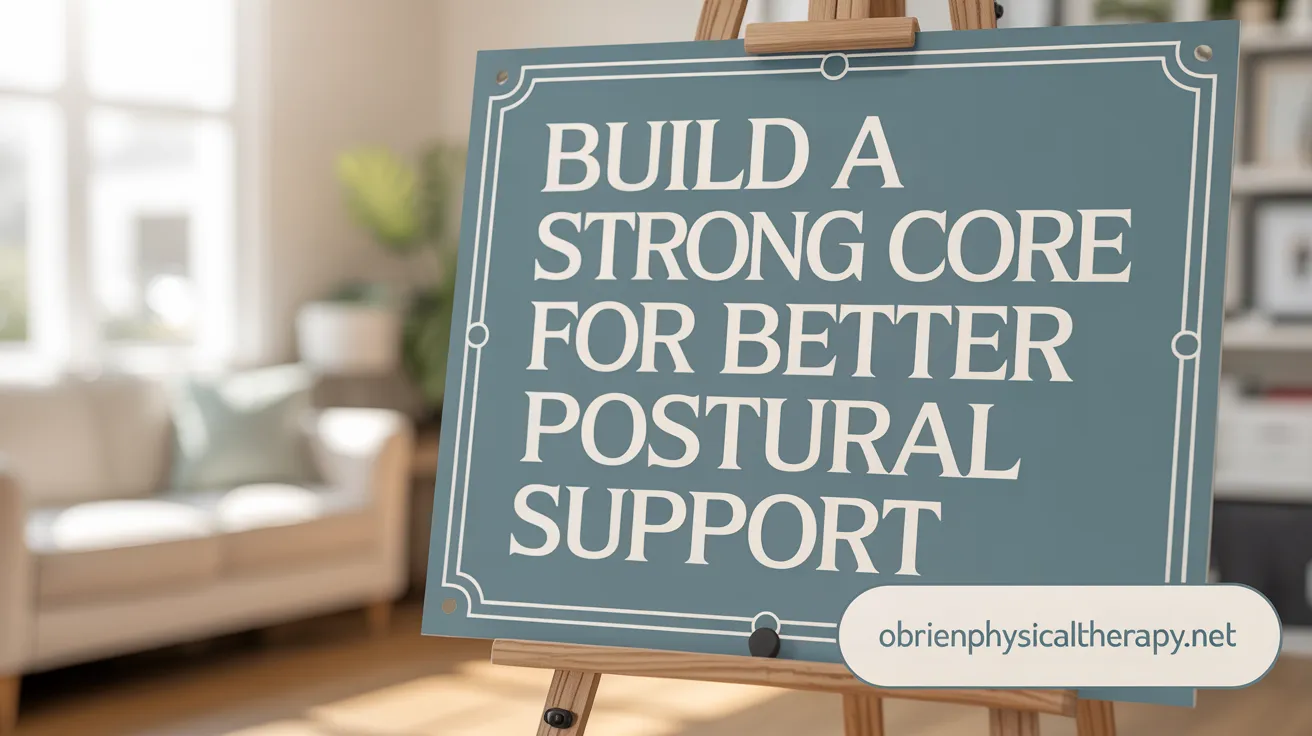
Why is core strength important in maintaining proper posture?
Core strength plays an essential role in supporting and maintaining proper body alignment. The core comprises muscles such as the transversus abdominis, multifidus, pelvic floor, diaphragm, obliques, and rectus abdominis. These muscles work together to stabilize the spine and pelvis, ensuring that the body remains upright and balanced during daily activities.
Deep core muscles, like the transversus abdominis and multifidus, act as internal support systems. The transversus abdominis, for example, functions as a built-in back brace, contracting to increase intra-abdominal pressure and provide spinal stability. This support helps prevent excessive spinal movement and maintains the natural curves of the spine, which is vital for good posture (Core muscles and posture support).
When core muscles are strong, they facilitate proper alignment and reduce unnecessary strain on the back, neck, and shoulders. This minimizes the risk of discomfort, fatigue, and musculoskeletal pain associated with poor posture. Moreover, core stability enhances overall movement efficiency, coordination, and balance, which are crucial for functional mobility (Core strength training for chronic low back pain).
Conversely, weak core muscles can lead to postural imbalances such as forward head posture, rounded shoulders, and an arched lower back. These imbalances often cause discomfort and pain, especially in the neck and lower back, and can lead to further musculoskeletal issues if not addressed (Core weakness and back pain).
In summary, a robust core acts as the foundation for good posture. Strengthening it through targeted exercises improves spinal support, promotes optimal alignment, and helps prevent postural-related pain and injuries. Regular core training, combined with stretching and ergonomic practices, is therefore vital for maintaining long-term postural health (Exercise program for posture correction, Core stabilization program).
Core Strengthening Exercises and Techniques in Physical Therapy
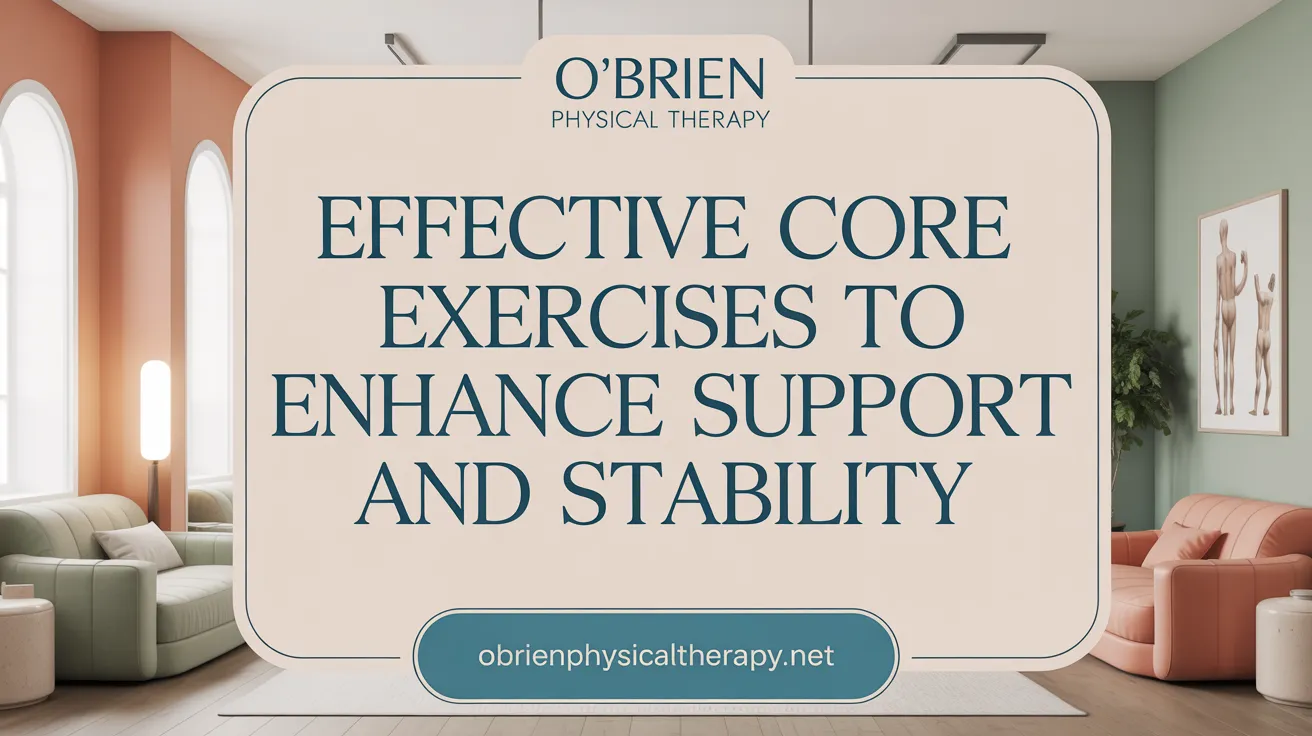
What core strengthening exercises and techniques are commonly used in physical therapy?
In physical therapy, a variety of exercises are utilized to strengthen the core muscles, which play a vital role in supporting the spine and maintaining good posture. These exercises include planks, bridges, abdominal bracing, pelvic tilts, leg marching, dead bugs, and partial sit-ups. Each targets the deep stabilizing muscles such as the transversus abdominis, multifidus, and erector spinae.
Therapists focus on ensuring correct activation of these muscles, often employing biofeedback and specific coaching to teach patients how to engage their core effectively. For example, abdominal bracing involves contracting the core muscles without holding the breath to improve spinal support (Core stabilization program).
Patients may also perform quadruped exercises, prone positions, and functional movements that progressively increase in difficulty to safely challenge their stability and endurance (Core Strength and Stability Program).
How do activation techniques enhance core muscle engagement?
Activation techniques involve instructing patients to consciously recruit deep core muscles through controlled breathing, cueing, and sometimes manual palpation. Techniques such as diaphragmatic breathing and pelvic floor contractions help synchronize muscle activation, which is crucial for effective stabilization (how to strengthen your core).
Using biofeedback devices or mirrors, therapists guide patients to achieve optimal muscle activation patterns, promoting better control and coordination. This foundation is essential before progressing to dynamic or load-bearing exercises (Core structures anatomy).
How is stabilization and flexibility incorporated into therapy?
Stabilization exercises like planks and side holds aim to enhance endurance and the ability to maintain proper posture during activity. Stretching tight muscles such as hamstrings, hip flexors, and chest muscles complements these efforts by removing mechanical restrictions and preventing imbalances that could compromise spinal support (Core stabilization program).
Flexibility routines typically include gentle stretches held for 15-30 seconds, focusing on muscle groups that tend to become tight with poor posture or inactivity (Postural Rehabilitation).
What is the role of aerobic conditioning?
In addition to strengthening, aerobic conditioning using low-impact activities like walking, water aerobics, or biking is recommended. These activities improve overall blood flow, promote tissue healing, and increase stamina, which supports the sustained effort needed for posture correction and core stability (Core stabilization program).
A gradual increase in duration, starting from ten-minute sessions up to thirty minutes, is advised to avoid overexertion (Core stabilization program).
How does progressive training ensure safety in therapy?
Progression in core training involves gradually increasing exercise difficulty, duration, or resistance, always maintaining proper form to prevent injury. Therapists tailor programs based on individual capacity, focusing on proper technique and controlled movements (Core Strength and Stability Program).
Monitoring for signs of fatigue or discomfort is critical, and adjustments are made to ensure safe, effective strengthening. This gradual approach not only optimizes strength gains but also minimizes the risk of strain or overuse injuries (Core stabilization program).
In summary, core strengthening in physical therapy centers on exercises like planks and bridges, activation of deep muscles through precise techniques, the integration of flexibility routines, and consistent aerobic activity. A careful, progressive approach guarantees safe, sustainable improvements in posture and spinal stability.
Postural Correction Methods and Strategies
Postural correction in physical therapy employs a comprehensive, multifaceted approach to restore proper body alignment and address imbalances. This strategy combines education on ergonomic modifications with targeted exercises, manual therapy, and neuromuscular re-education techniques.
A primary focus is strengthening weak muscles—such as those in the back, core, and glutes—that support proper posture. Simultaneously, tight muscles—including the chest, hip flexors, and neck muscles—are stretched to alleviate imbalance and stiffness (Stretching Tight Muscles, Manual therapy benefits).
Therapists also emphasize the importance of postural awareness, teaching patients how to maintain correct positioning during daily activities. Regular movement is encouraged, such as taking breaks every 15 to 30 minutes to stretch and change posture, which helps prevent the development of chronic postural issues (Importance of frequent movement).
Manual therapy techniques, such as joint mobilizations and soft tissue massage, are used to improve mobility and correct misalignments.
Neuromuscular re-education plays a vital role by retraining muscles to activate in the correct pattern, promoting sustained postural improvements (Neuromuscular training and core stabilization).
Customized programs often include exercises like thoracic extension, shoulder blade retraction, pelvic tilts, and core stabilization routines. Together, these strategies help reduce pain, improve function, and prevent long-term musculoskeletal problems associated with poor posture.
Benefits of Physical Therapy for Posture and Pain Relief
Physical therapy provides significant benefits for individuals seeking to improve their posture and reduce musculoskeletal pain. By addressing muscle imbalances, physical therapists help correct poor alignment, which can alleviate chronic pain in areas such as the back, neck, shoulders, and hips. Therapies often incorporate manual therapy techniques, ultrasound, electrical stimulation, and targeted exercises to relax tight muscles and strengthen weak ones.
A multidisciplinary approach that combines exercise routines with patient education on proper ergonomics and posture habits has been proven to produce lasting improvements. These strategies not only reduce pain but also enhance overall function, making daily activities easier and more comfortable.
Strengthening core and stabilizer muscles is crucial for maintaining proper posture, especially after prolonged sitting or injury. Flexibility exercises further help prevent tightness that could lead to imbalance and discomfort. Moreover, a comprehensive therapy regimen can boost soft tissue flexibility, balance, and coordination.
Beyond physical benefits, therapy also positively impacts mental well-being. As pain diminishes and movement becomes easier, individuals often experience increased confidence and reduced anxiety related to mobility issues. Overall, physical therapy supports long-term health improvements, enabling better posture, less pain, and a higher quality of life.
Recognizing Postural Issues: Symptoms, Causes, and Assessment
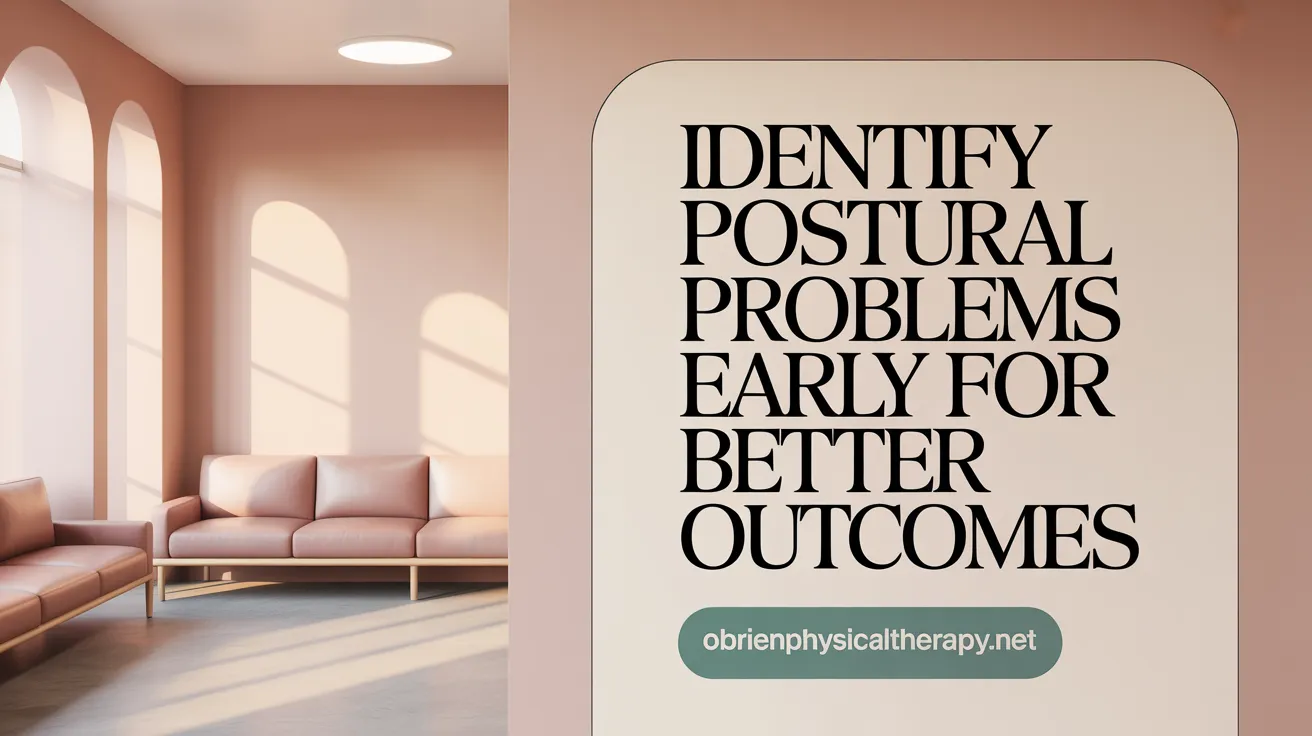 Postural problems often manifest through a variety of symptoms that can be observed and felt. Common signs include persistent neck or back pain, muscle fatigue, uneven shoulders, a forward head posture, and restricted movement, especially after prolonged sitting or poor ergonomic habits. Physical signs visible during assessment might show abnormal spinal curves such as excessive kyphosis or lordosis, muscle imbalances like weakened abdominal muscles or tight hip flexors, and compensatory movement patterns aimed at maintaining balance. For detailed information on Signs of Poor Posture to Watch and Common Postural Problems, see these resources.
Postural problems often manifest through a variety of symptoms that can be observed and felt. Common signs include persistent neck or back pain, muscle fatigue, uneven shoulders, a forward head posture, and restricted movement, especially after prolonged sitting or poor ergonomic habits. Physical signs visible during assessment might show abnormal spinal curves such as excessive kyphosis or lordosis, muscle imbalances like weakened abdominal muscles or tight hip flexors, and compensatory movement patterns aimed at maintaining balance. For detailed information on Signs of Poor Posture to Watch and Common Postural Problems, see these resources.
Several causes contribute to the development of postural issues. Sedentary lifestyles, especially sitting for long hours at desks or using devices, strain the muscles and joints, leading to imbalance. Repetitive movements and previous injuries can also alter normal alignment. Muscle imbalances—weakness in certain muscle groups coupled with tightness in others—are key contributors to postural deviations such as upper cross syndrome (forward head, rounded shoulders) or lower cross syndrome (arched lower back, pelvic tilt). Learn more about Causes of Poor Posture and Upper Cross Syndrome.
Physical therapy plays a crucial role in accurately evaluating these problems. Therapists assess posture by examining body alignment, muscle strength, flexibility, and movement patterns. They often observe the patient’s static posture and motion during specific tasks to identify weaknesses and tightness. Tests may include palpation for tenderness, range of motion assessments, and functional tests like the single-leg squat. More on Physical Therapy for Postural Correction and Posture Assessment and Correction can be found here.
Early recognition of postural issues is essential because long-term imbalance can lead to increased pain, joint degeneration, and reduced mobility. Identifying signs early allows intervention before chronic problems develop. Physical therapy, through tailored exercises such as shoulder blade squeezes, thoracic stretches, and core activation, aims to correct these problems by restoring muscular balance and promoting proper alignment. For exercise ideas visit Best Physical Therapy Posture Exercises and Core Stabilization Program.
When symptoms persist despite lifestyle modifications or self-care, or when observable signs of imbalance affect daily activities, seeking professional evaluation becomes necessary. Addressing postural discrepancies early helps prevent more severe conditions, improves comfort, and supports overall health and function. More on Professional Postural Treatment and Physical Therapy for Bad Posture is available.
Scientific Evidence Supporting Physical Therapy for Postural Alignment
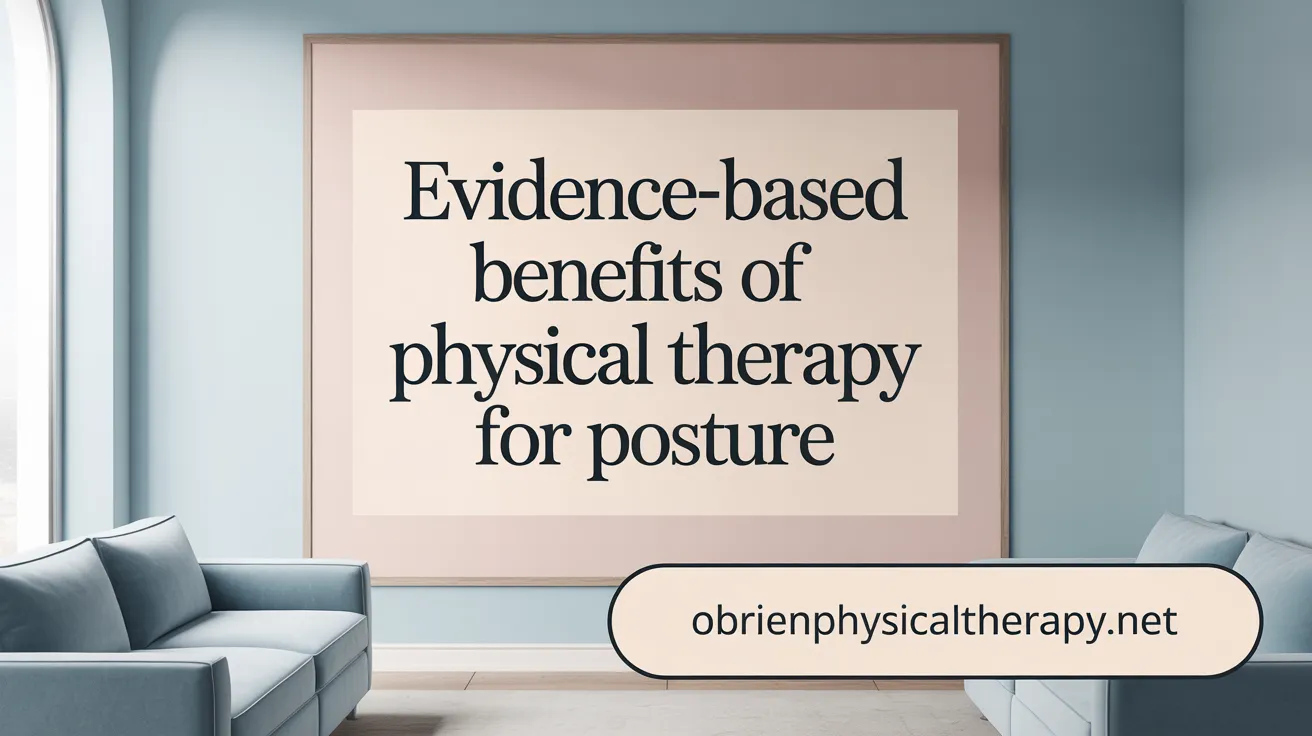 Research consistently shows that physical therapy is effective in improving posture and alleviating related musculoskeletal pain. Systematic reviews and clinical trials reveal that targeted exercises, including stretching and strengthening routines, can significantly reduce issues like forward head posture, rounded shoulders, and kyphosis (exercise and postural disorders prevention).
Research consistently shows that physical therapy is effective in improving posture and alleviating related musculoskeletal pain. Systematic reviews and clinical trials reveal that targeted exercises, including stretching and strengthening routines, can significantly reduce issues like forward head posture, rounded shoulders, and kyphosis (exercise and postural disorders prevention).
Many studies indicate that interventions focusing on restoring muscle balance and neuromuscular control yield positive outcomes. For instance, exercises designed to strengthen the upper back and core, combined with stretching tight chest and neck muscles, help correct postural misalignments over a period of several weeks (Physical Therapy for Postural Imbalances).
Key findings from research highlight that consistent engagement in tailored exercise programs—performed two to four times a week for at least 6 weeks—can improve spinal alignment and muscle function. Improvements are often reflected in better postural angles, reduced pain, and increased flexibility (Exercise Program for Posture Correction).
However, the quality of evidence varies; many studies are small and lack standardized protocols, which limits generalizability. Despite this, the overall body of evidence supports the role of physical therapy as a beneficial approach for posture correction (The Importance of Posture and How Physical Therapy Can Help).
Implications for therapy practice include adopting evidence-based exercises that target specific postural faults, emphasizing regularity and duration, and tailoring programs to individual needs (Postural Rehabilitation: Physical Therapy Exercises for Addressing Postural Dysfunction). Continued research with larger, rigorous trials is essential to refine these interventions further and establish more definitive protocols (Exercise Effects on Postural Alignment).
The Path to Better Posture Through Physical Therapy
Physical therapy offers a comprehensive and scientifically supported pathway to correct postural misalignments and enhance core strength, which are essential for musculoskeletal health and pain reduction. By combining personalized assessments with targeted exercises, manual therapies, and patient education, therapists empower individuals to regain balance, reduce discomfort, and improve function. Strengthening the core not only provides spinal support but also improves movement efficiency and prevents injury. Recognizing symptoms early and adhering to prescribed treatment plans maximize the benefits of physical therapy. Ultimately, consistent engagement with physical therapy interventions fosters long-term posture improvement, pain relief, and a better quality of life.
